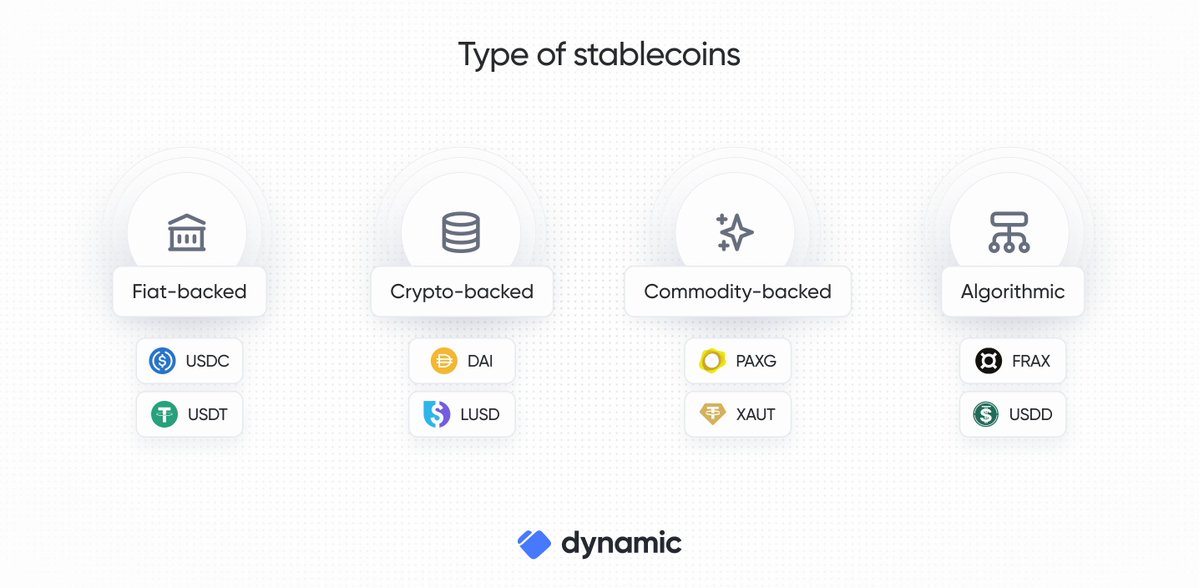Not all stablecoins are created equal.
There are 4 approaches, each with their own risks and tradeoffs.
Let’s break down what makes each one different and why it matters for you 🧵

Fiat-backed stablecoins 🏦
Pegged to the price of fiat currencies like the US dollar, this category has seen the broadest adoption, with key issuers including @Tether_to, @USDC, and @PayPal.
Crypto-backed stablecoins ⛓️
These stablecoins use other crypto as collateral and through smart contracts.
This category is led by @SkyEcosystem and @LiquityProtocol.
Commodity-backed stablecoins 🪙
This category contains stablecoins which peg their value to real world assets like gold, offering tokenized alternatives to popular commodities.
PAXG from @Paxos is the most popular one.
Algorithmic stablecoins ⚖️
Companies like @fraxfinance have issued algorithmic stablecoins which attempt to automatically manage their peg through smart contracts and algorithms.
Go deeper with our beginner's guide to everything stablecoins ↓
7.55K
6
The content on this page is provided by third parties. Unless otherwise stated, OKX TR is not the author of the cited article(s) and does not claim any copyright in the materials. The content is provided for informational purposes only and does not represent the views of OKX TR. It is not intended to be an endorsement of any kind and should not be considered investment advice or a solicitation to buy or sell digital assets. To the extent generative AI is utilized to provide summaries or other information, such AI generated content may be inaccurate or inconsistent. Please read the linked article for more details and information. OKX TR is not responsible for content hosted on third party sites. Digital asset holdings, including stablecoins and NFTs, involve a high degree of risk and can fluctuate greatly. You should carefully consider whether trading or holding digital assets is suitable for you in light of your financial condition.

